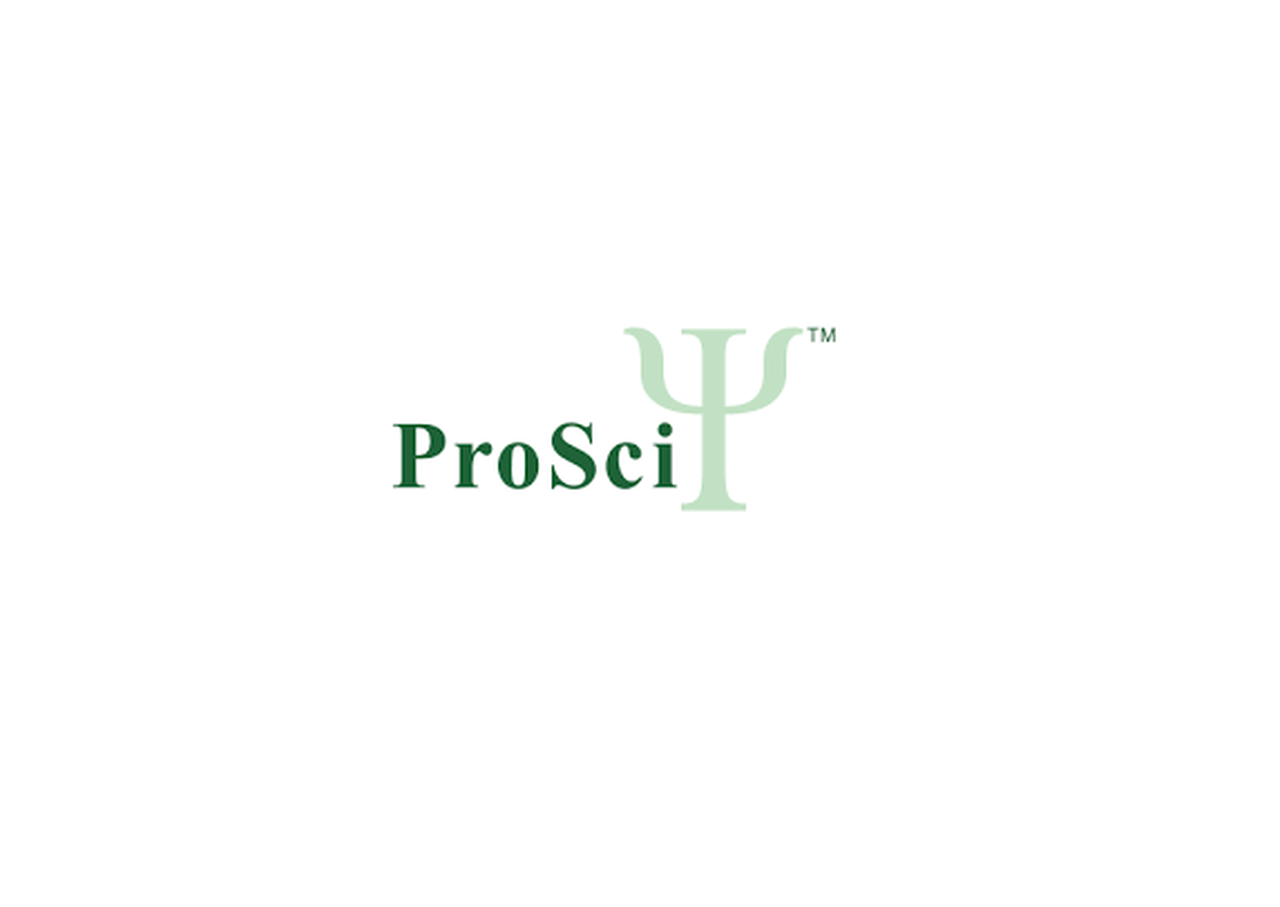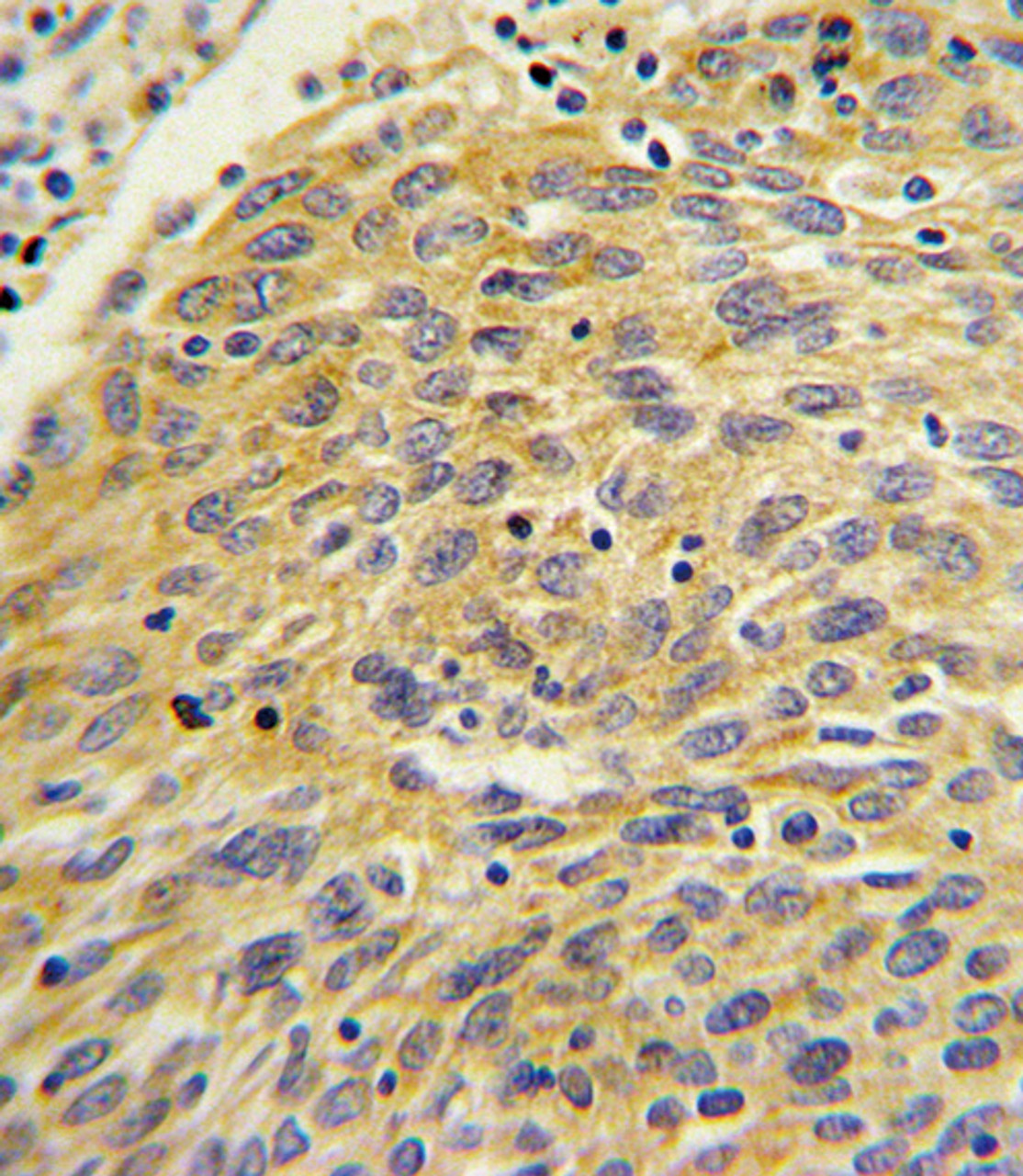Product Description
PLA2G4A Antibody | 63-495 | ProSci
Host: Rabbit
Reactivity: Human
Homology: Predicted species reactivity based on immunogen sequence: Chicken, Zebrafish, Mouse, Rabbit, Rat
Immunogen: This PLA2G4A antibody is generated from rabbits immunized with a KLH conjugated synthetic peptide between 513-541 amino acids from the Central region of human PLA2G4A.
Research Area: Immunology, Obesity, Signal Transduction
Tested Application: WB, IHC-P, IF, Flow
Application: For WB starting dilution is: 1:1000
For IHC-P starting dilution is: 1:10~50
For IF starting dilution is: 1:10~50
For FACS starting dilution is: 1:10~50
Specificiy: N/A
Positive Control 1: N/A
Positive Control 2: N/A
Positive Control 3: N/A
Positive Control 4: N/A
Positive Control 5: N/A
Positive Control 6: N/A
Molecular Weight: 85 kDa
Validation: N/A
Isoform: N/A
Purification: This antibody is purified through a protein A column, followed by peptide affinity purification.
Clonality: Polyclonal
Clone: N/A
Isotype: Rabbit Ig
Conjugate: Unconjugated
Physical State: Liquid
Buffer: Supplied in PBS with 0.09% (W/V) sodium azide.
Concentration: batch dependent
Storage Condition: Store at 4˚C for three months and -20˚C, stable for up to one year. As with all antibodies care should be taken to avoid repeated freeze thaw cycles. Antibodies should not be exposed to prolonged high temperatures.
Alternate Name: Cytosolic phospholipase A2, cPLA2, Phospholipase A2 group IVA, Phospholipase A2, Phosphatidylcholine 2-acylhydrolase, Lysophospholipase, PLA2G4A, CPLA2, PLA2G4
User Note: Optimal dilutions for each application to be determined by the researcher.
BACKGROUND: PLA2G4A is a member of the cytosolic phospholipase A2 group IV family. The enzyme catalyzes the hydrolysis of membrane phospholipids to release arachidonic acid which is subsequently metabolized into eicosanoids. Eicosanoids, including prostaglandins and leukotrienes, are lipid-based cellular hormones that regulate hemodynamics, inflammatory responses, and other intracellular pathways. The hydrolysis reaction also produces lysophospholipids that are converted into platelet-activating factor. The enzyme is activated by increased intracellular Ca (2+) levels and phosphorylation, resulting in its translocation from the cytosol and nucleus to perinuclear membrane vesicles.
 Euro
Euro
 USD
USD
 British Pound
British Pound
 NULL
NULL












![PLA2G4A Antibody (Center) [AMR09333G] PLA2G4A Antibody (Center) [AMR09333G]](https://cdn11.bigcommerce.com/s-452hpg8iuh/images/stencil/500x659/products/868598/1160665/logo__92149.1659788186__02612.1659864445.png?c=2)



